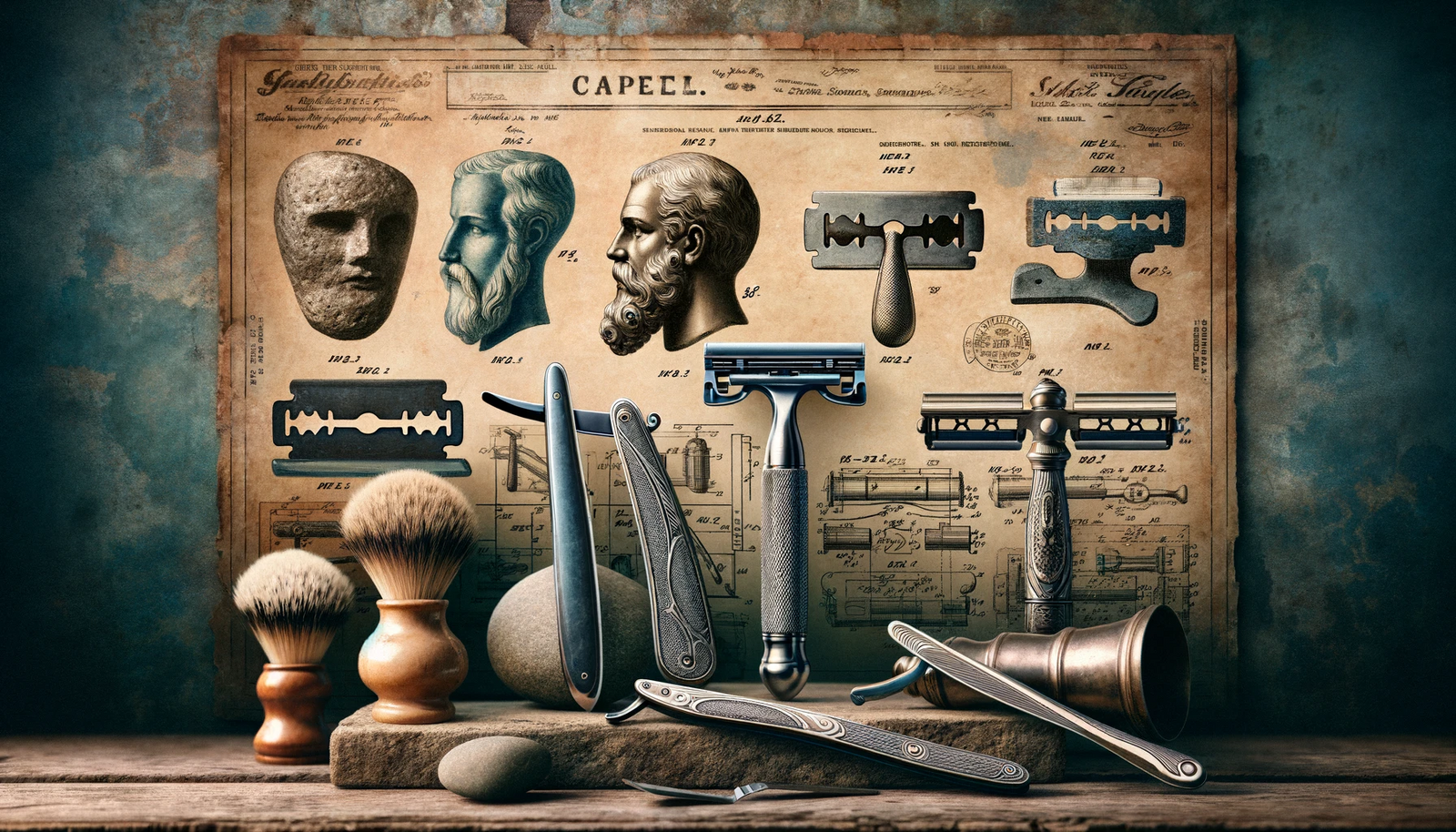Introduction
Shaving, an essential aspect of personal grooming, has evolved significantly over the centuries. This evolution is notably marked by a series of inventive patents, especially from the early 1900s. These patents not only reflect the ingenuity of their times but have also set the foundation for the modern shaving tools and techniques we use today. This article delves into the fascinating world of early shaving patents, exploring their impact on contemporary shaving practices.
The Early Days of Shaving and the Rise of Patents
Before the 20th century, shaving was typically a laborious and often unsafe practice. The use of straight razors required skill, and the risk of cuts and infections was high. The dawn of the 1900s, however, brought a wave of innovations. Patents filed during this era aimed to make shaving safer, quicker, and more accessible to the average person.
King C. Gillette: The Safety Razor Revolution
One of the most significant patents in shaving history was filed by King C. Gillette in 1904. Gillette's safety razor transformed the shaving world by introducing a safe, easy-to-use, and disposable blade. This invention not only democratized shaving but also laid the groundwork for the disposable consumer culture in other industries. Click HERE to view our selection of Gillette Products.
The Evolution of Razor Blades and Handles
Following Gillette's breakthrough, numerous patents emerged, focusing on improving razor blades and handles. Innovations included adjustable razors, which allowed for a closer shave, and ergonomically designed handles for better grip and control. These patents played a pivotal role in enhancing the safety and comfort of shaving, leading to the diverse range of razors available today.
The Introduction of Electric Shavers
In the 1930s, the first electric razor patent was filed by Jacob Schick. This invention marked a significant shift from manual to electric shaving, offering a new level of convenience. Electric shavers have since evolved to feature rotary and foil designs, catering to different skin types and shaving preferences. Click HERE to view our collection of Electric razors.
Impact on Shaving Creams and Gels
Parallel to the evolution of razors, there were also advancements in shaving creams and gels. Early patents in this area focused on creating formulas that would provide better lubrication, reducing skin irritation and improving the overall shaving experience. These innovations laid the foundation for the wide array of shaving products available today.
The Legacy of Early Shaving Patents
The impact of these early patents extends beyond the development of shaving tools and techniques. They also influenced societal norms, such as grooming standards and the perception of personal care. Additionally, the disposable nature of early razor designs heralded a shift towards a more disposable culture in various consumer products.
Conclusion
The early 1900s were a period of remarkable innovation in the world of shaving, as evidenced by the numerous patents filed during this time. These inventions not only made shaving safer and more convenient but also influenced broader cultural and consumer trends. As we continue to see advancements in shaving technology, it's essential to acknowledge and appreciate the historical patents that paved the way for the modern grooming experience.
References
- "The Art of Shaving: 100 Years of Razor Blade Patents" by Richard Jones
- "Shaving Technology: A Century of Innovation" by Emily Clark
- U.S. Patent Office Records
- "The History of Electric Shaving" by Michael Adams
This exploration of shaving patents from the early 1900s reveals how these early innovations continue to shape the tools and techniques of modern grooming. From Gillette's safety razor to the advent of electric shavers and the evolution of shaving creams, the legacy of these patents is ingrained in every aspect of today's shaving experience.

